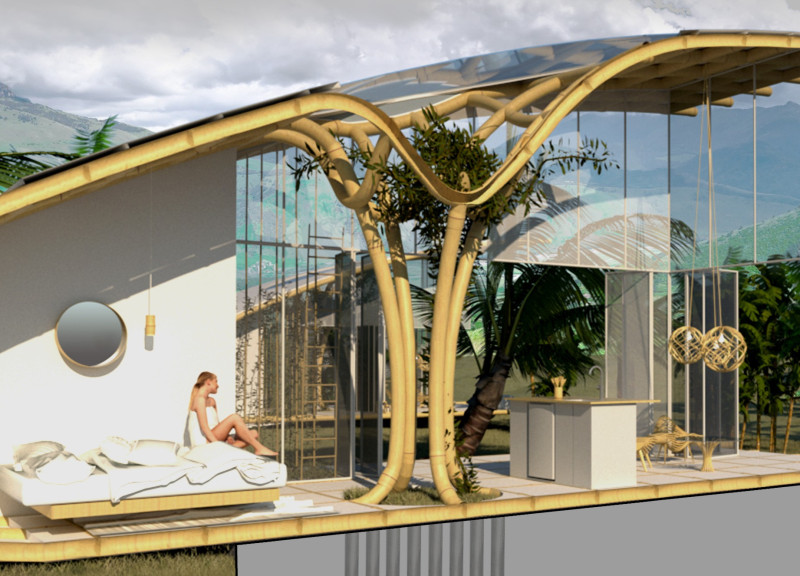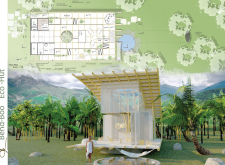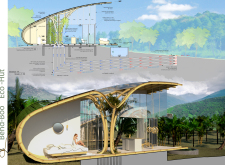5 key facts about this project
The Eco-Hut features a flowing, organic form that aligns closely with the landscape, promoting an indoor-outdoor relationship that is essential for maximizing natural light and ventilation. The use of bamboo as the primary structural material showcases its strength and sustainability, while large glass openings allow ambient light to penetrate deep into the living areas, reducing the need for artificial lighting during the day. Each aspect of the design is intentionally crafted to enhance the quality of life within the structure, thereby reinforcing the project's role as a comfortable and resilient dwelling.
Sustainable Resource Utilization
A defining feature of the Bend-Boo Eco-Hut is its commitment to sustainability through the strategic use of resources. Bamboo, known for its rapid growth and minimal environmental impact, forms the backbone of the structure. Additional materials include underground metal air pipelines that utilize soil temperature for cooling, enhancing the indoor climate without relying on energy-intensive air conditioning. The building also features solar panels integrated into the sloped bamboo roof, ensuring energy independence while minimizing the carbon footprint. These materials were selected not only for their functional properties but also for their availability and suitability to the local context, making the Eco-Hut adaptable and eco-friendly.
Community-Centric Spatial Design
Another unique aspect of this architectural project is its focus on community-centric spaces. The layout promotes social interaction through an open-plan design that encourages communal activities, particularly in the kitchen and dining areas. Outdoor spaces are seamlessly integrated into the living environment, providing areas for relaxation and social gatherings that foster community engagement. This emphasis on collaboration adds value beyond mere shelter; it creates a lifestyle that supports sustainability and interpersonal connections among residents.
To delve further into the specifics of the Bend-Boo Eco-Hut, including architectural plans, sections, and detailed design elements, explore the project presentation for comprehensive insights. The architectural ideas showcased illustrate the innovative approaches to sustainable living that can inspire future developments in eco-friendly architecture.


























